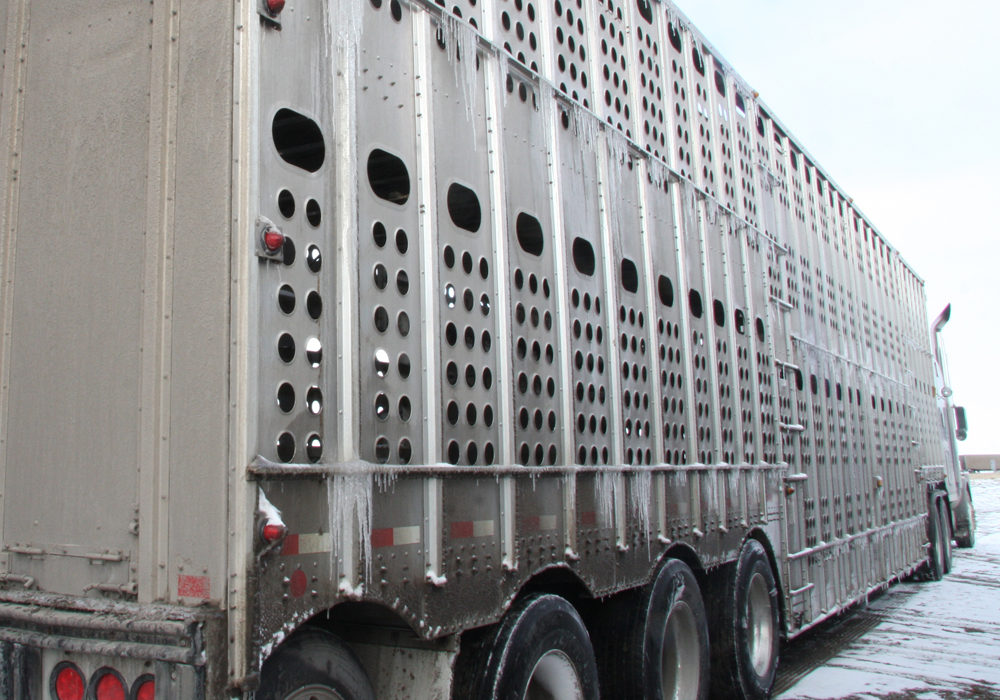SASKATOON — A study has found that rest stops during transportation had little to no effect on calves in good condition, says the researcher.
Dr. Karen Schwartzkopf-Genswein from the federal research station at Lethbridge said the difference between calves transported for 36 hours or 12 hours, with and without rest stops, was some fatigue.
She said this shows the impact on cattle is due to the transport itself.
“I was actually surprised that we didn’t see a difference,” she said in an interview after her presentation to the Saskatchewan Beef Industry Conference. “Imagine, those given no rest at all or 12 hours of rest, I mean, in that period they’re consuming feed and water, they’re lying down, all those things, so I was really quite surprised.”
Read Also

Beef check-off collection system aligns across the country
A single and aligned check-off collection system based on where producers live makes the system equal said Chad Ross, Saskatchewan Cattle Association chair.
The study is related to the Canadian Food Inspection Agency’s new regulations, which would allow no more than 12 hours on a truck for unweaned animals and a maximum of 36 hours for weaned animals, with a required eight-hour rest.
Those regulations were to come into force later this month but a two-year grace period to allow for studies is in place.
The study included 320 weaned Angus-cross calves, all from the same ranch and between seven and eight months old.
All were brought to the research station to settle so that it was clear any differences were due to the transport treatment afterward.
The calves were conditioned 18 to 26 days before the trial: weaned, vaccinated, castrated, branded, ear tagged, and adapted to feed and water. Schwartzkopf-Genswein said this technically can’t be considered pre-conditioning because that formally requires 30 to 45 days.
There were eight different treatments in the study and all were tested for behavioural and physiological aspects.
The trucks went either 12 hours or 36 hours, with rest stops of zero, four, eight or 12 hours. Then, they all went a final four hours before measurements of things such as weight, shrink, feeding behaviour and health were taken.
Schwartzkopf-Genswein said the calves that had longer rest stops had greater body weight than those that weren’t rested, which makes sense because they had more time to access feed and water.
“Animals given zero hours of rest, or up to 12 hours of rest, the only indicator that we saw that was different with that was, on the 36-hour animals that had zero hours of rest, they had greater fat mobilization, which is an indicator of food deprivation, compared to those transported with eight and four hours of rest,” she said. “Overall, the other things we saw were really due to the transport duration itself.”
She said management of cattle before they are to be transported seems to have the greatest impact on how they withstand the truck and trailer.
“Calves in good condition are able to cope with transport stress, regardless of what period of rest they get,” she said.


















